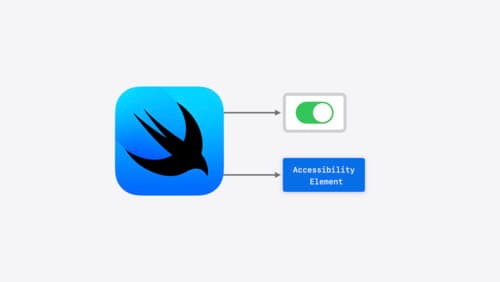Do I need to implement eye tracking accessibility?
Asked on 2024-08-05
1 search
Implementing eye tracking accessibility is not strictly necessary, but it can significantly enhance the user experience, especially for users of visionOS and Apple Vision Pro. Here are some key points to consider:
-
Natural Input with VisionOS:
- VisionOS uses natural input, allowing users to target interaction regions with their eyes and interact by tapping their fingers together. This is highlighted in the session Optimize for the spatial web.
-
Privacy Considerations:
- VisionOS ensures user privacy by keeping the gaze data private. The highlights indicating where the user is looking are drawn by a process outside of Safari, ensuring that even the browser does not know where the user is looking (Optimize for the spatial web).
-
WebXR and Gaze Interaction:
- In WebXR, gaze and pinch interactions are used, but knowing what the user is looking at is considered sensitive information. Spatial inputs only reveal where the user was looking at the moment of a pinch (Build immersive web experiences with WebXR).
-
Hand Tracking:
- Hand tracking is a primary means of input on visionOS, and it can be used to detect gestures and anchor virtual content to hands. This is discussed in the session Create enhanced spatial computing experiences with ARKit.
-
Accessibility in SwiftUI:
- SwiftUI provides robust accessibility features, ensuring that all interactive elements are accessible through technologies like VoiceOver. This is covered in the session Catch up on accessibility in SwiftUI.
Relevant Sessions
- Optimize for the spatial web
- Build immersive web experiences with WebXR
- Catch up on accessibility in SwiftUI
- Create enhanced spatial computing experiences with ARKit
In summary, while not mandatory, implementing eye tracking accessibility can greatly improve the user experience on visionOS and Apple Vision Pro, and it aligns with Apple's commitment to privacy and accessibility.

Build immersive web experiences with WebXR
Discover how WebXR empowers you to add fully immersive experiences to your website in visionOS. Find out how to build WebXR experiences that take full advantage of the input capabilities of visionOS, and learn how you can use Simulator to test WebXR experiences on macOS.

Optimize for the spatial web
Discover how to make the most of visionOS capabilities on the web. Explore recent updates like improvements to selection highlighting, and the ability to present spatial photos and panorama images in fullscreen. Learn to take advantage of existing web standards for dictation and text-to-speech with WebSpeech, spatial soundscapes with WebAudio, and immersive experiences with WebXR.

Catch up on accessibility in SwiftUI
SwiftUI makes it easy to build amazing experiences that are accessible to everyone. We’ll discover how assistive technologies understand and navigate your app through the rich accessibility elements provided by SwiftUI. We’ll also discuss how you can further customize these experiences by providing more information about your app’s content and interactions by using accessibility modifiers.
